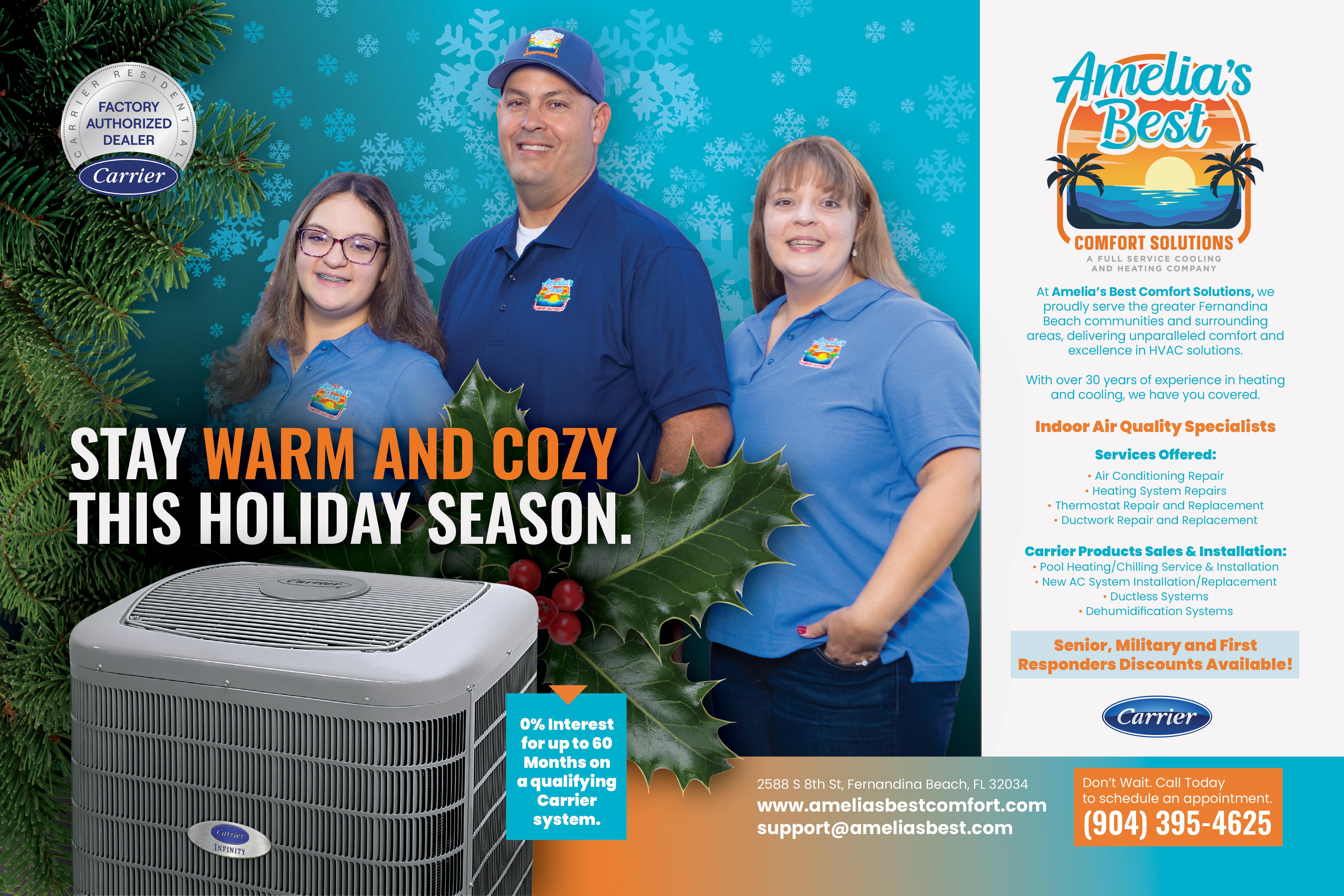
ADD SOME FESTIVE FERMENTS TO THE MENU THIS YEAR
SPICE UP YOUR WORKOUTS THIS HOLIDAY WITH OUR 12-DAYS OF FITMAS
DON’T GIVE IN TO DEHYDRATION THIS SEASON


ADD SOME FESTIVE FERMENTS TO THE MENU THIS YEAR
SPICE UP YOUR WORKOUTS THIS HOLIDAY WITH OUR 12-DAYS OF FITMAS
DON’T GIVE IN TO DEHYDRATION THIS SEASON

Setting the hook shouldn’t set off pain. Baptist Orthopedics is now open in Yulee so you can enjoy life without joint pain.
Baptist Orthopedics offers easy access, with same and next-day appointments available.
Our team provides personalized care to restore function and alleviate pain for mobility issues.
Treatment options range from conservative management with physical therapy, bracing, injections and medication to advanced surgical interventions when necessary.
In addition to traditional non-surgical treatment options, we also offer innovative treatments, like platelet-rich plasma (PRP).
When non-surgical options fall short, we provide advanced surgical techniques, including minimally invasive procedures and partial and full joint replacements.
After surgery, our team guides you through a rehabilitation plan that fits your lifestyle, helping you regain strength, mobility and confidence at your own pace. Call 904.202.MOVE (6683), visit BaptistJax.com/Ortho or scan the QR code to learn more.


PUBLISHER & EDITOR-IN-CHIEF
ART DIRECTOR
VICE PRESIDENT OF SALES
ACCOUNT EXECUTIVE
EDITORIAL INTERNS
SOCIAL MEDIA INTERN
CONTRIBUTING WRITERS
Nicole Irving
Aníbal Rodríguez
Shane Irving
Bilinda Rountree
Alexandra Burns, Reagan Poland
Meghan Shepp
Franziska Bernhard, Alexandra Burns, Daphne Forhand, Nicole Irving, Lindsey Johnson, Dr. Jennifer Martin, Kendra Miller, Reagan Poland, Cole Purvis, Danielle Spano
MAILING ADDRESS
5745 SW 75th St. Unit 286
Gainesville, FL 32608
PHYSICAL ADDRESS 101 SW 140th Terrace Suite C
Newberry, FL 32669
Amelia Island: 352.478.9079
Gainesville: 352.505.5821
Wellness360Nassau.com Bilinda@IrvingPublications.com
Wellness360 is a registered trademark property of Irving Publications, LLC. All rights reserved. Wellness360 is published by Irving Publications, LLC. © 2025
Irving Publications, LLC reserves the right to edit and/or reject any advertising. Irving Publications, LLC is not responsible for the validity of any claims made by its advertisers. Nothing that appears in Wellness360 Magazine may be reproduced in any way, without written permission. Opinions expressed by Wellness360 Magazine writers are their own and do not necessarily reflect the publisher’s opinion. Wellness360 Magazine will consider all never before published outside editorial submissions. Irving Publications, LLC reserves the right to edit and/or reject all outside editorial submissions and makes no guarantees regarding publication dates.
The information found in Wellness360 Magazine does not constitute individualized medical advice. You must NOT rely on the information in this magazine as an alternative to medical advice from your doctor or other professional health care provider. If you have any specific questions about any medical matter you should consult your doctor or other professional health care provider. If you think you may be suffering from any medical condition you should seek immediate medical attention. You should never delay seeking medical advice, disregard medical advice, or discontinue medical treatment because of information in this publication. Wellness 360 Magazine assumes no responsibility for any circumstances arising out of the use, misuse, interpretation or application of any information supplied within the magazine. Always consult with your doctor for appropriate examinations, treatment, testing and care recommendations. Do not rely on information on in this magazine as a tool for self-diagnosis. You exercise your own judgment when using or purchasing any product highlighted in Wellness360 Magazine. Wellness 360 Magazine assumes no responsibility for errors or omissions in this publication or other documents that are referenced by or linked to this publication.
ADVERTISING
For more information regarding advertising within Wellness360 Magazine, please visit irvingpublications.com, call 352.478.9079 or email Bilinda@IrvingPublications.com.




Gather everyone together this holiday season for festive bites, flavorful dishes and most importantly, laughter and making memories.

23
The Long Goodbye: A Daughter’s Journey of Love, Loss and Alzheimer’s
Many of the stories we often hear of Alzheimer’s, either through the news or distant friends or family, emphasize the concept of memory loss, yet fail to explain how the disease is much more complex than forgetting the names of your loved ones.

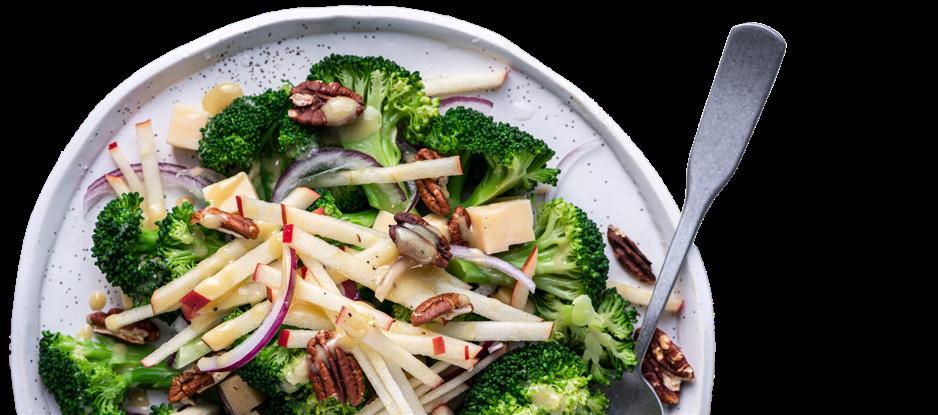


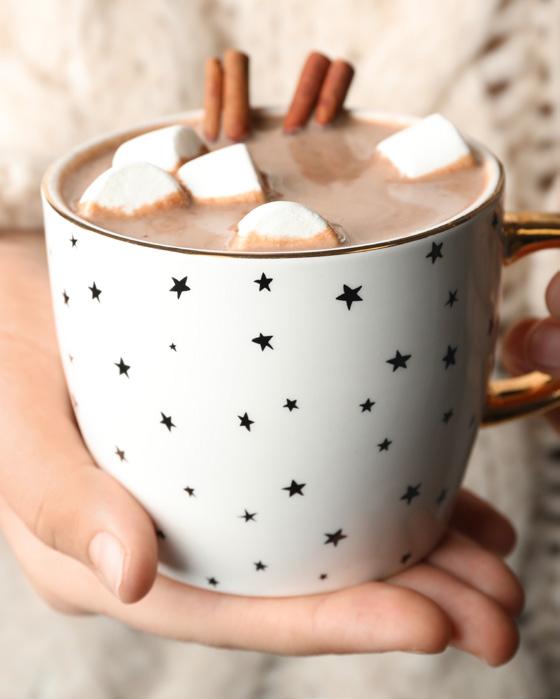

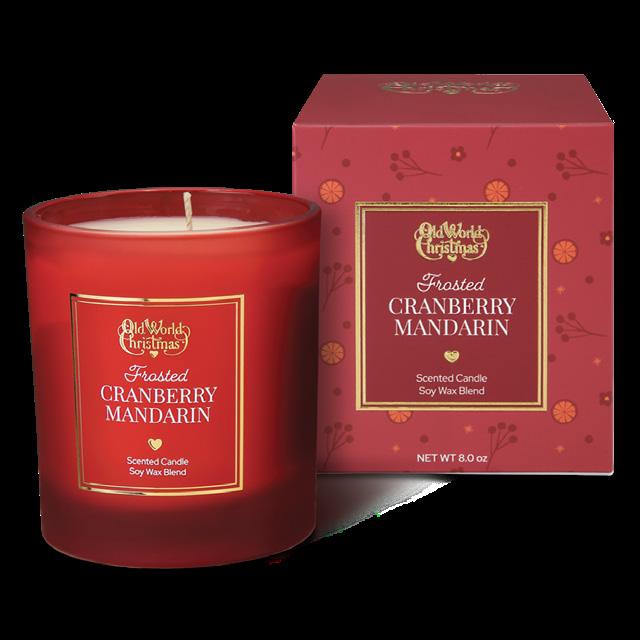

As the year comes to a close and the holiday lights begin to glow across Amelia Island, I find myself reflecting on how much there is to be thankful for. This season always carries a sense of renewal — a gentle reminder to pause, take a deep breath and recognize the beauty in the moments that have shaped us.
At Wellness360 Magazine, this year has been filled with growth, collaboration and connection. We’ve expanded to a new area, shared stories that celebrate the many sides of wellness — physical, emotional and social — and we’ve had the honor of highlighting people and businesses in our community who make a difference every single day. From local fitness experts to inspiring community members who remind us what resilience looks like, each story has been a reminder that wellness is not a destination but a journey we take together.
Gratitude has been our guiding word. Gratitude for our readers who continue to support and engage with us — in print, online and at local events. Gratitude for our advertisers and partners who believe in our mission. And, most of all, gratitude for our team — writers, photographers, account executives and our designer — whose creativity, talent and heart bring Wellness360 Magazine to life with every issue.
This time of year invites us to slow down and reconnect with what matters most. Whether you’re gathering with family, reflecting on the year behind you or looking ahead to new goals, remember that wellness also means giving yourself grace. Take time to rest, to laugh, to love and to be present in the moments that fill your heart.
As we look ahead to 2026, my hope is that we carry this spirit of gratitude forward — embracing new opportunities, nurturing kindness and continuing to care for ourselves and one another.
From all of us at Wellness360 Magazine, thank you for being part of our story. Wishing you a peaceful holiday season and a healthy, joy-filled year ahead.

Nicole Irving, Publisher, EIC nbirving@irvingpublications.com


BY LINDSEY JOHNSON, MS, MCHES, CF-L2
Lung and bronchus cancer is the leading cause of cancer death in the U.S., accounting for more deaths than breast, prostate and colorectal cancers combined. While most people associate lung cancer with smoking, this assumption can be dangerously misleading. As physician and longevity expert Dr. Peter Attia has emphasized, “The scary truth is that people who never smoke can still develop - and die from - lung cancer.” Lung cancer is not just a smoker’s disease, and understanding who should be vigilant could save lives.
According to the American Cancer Society, approximately 226,650 new lung cancer cases and 124,730 deaths are expected in 2025. While it represents just over 11% of cancer diagnoses, it accounts for more than 20% of all cancer deaths.
The reason? Late detection. The average five-year survival rate for lung cancer is about 29%, but when caught early and treated before it spreads, survival can jump above 60%. Unfortunately, early lung cancer often shows little to no signs before disease becomes advanced.
While we think that only smokers are affected, 10 - 20% of lung cancer cases occur in people who have never smoked - that’s roughly 20,000 to 40,000 Americans every year. If lung cancer in never-smokers were classified as its own disease, it would still rank among the top 10 deadliest cancers in the country.
One large U.S. registry analysis found that about 12% of all newly diagnosed lung cancer patients report never having smoked. Among women, the figure is even more striking - nearly 19% of female lung cancer patients are lifetime non-smokers.


In 2015, researchers estimated approximately 19,800 lung cancer deaths among never-smokers in a single year (around 11,000 women and 8,800 men). These numbers are not trivial. As Attia notes, “If we're only screening smokers, we're ignoring a huge segment of lung cancer mortality.” Nearly 20,000 deaths per year is not something to overlook.
Lung cancer in non-smokers is typically driven by different factors, including:
• Radon exposure (a leading cause in never-smokers)
• Air pollution or secondhand smoke
• Occupational exposures such as asbestos or diesel fumes
• Genetic mutations, which are often seen in adenocarcinomas
• Family history or unknown genetic predispositions
These cancers also tend to occur at a younger age, and because they fall outside the typical risk profile, are often diagnosed late after several misdiagnoses.
Whether you smoke or not, persistent lung symptoms should never be dismissed. Key warning signs include:
• A persistent or worsening cough lasting more than six weeks
• Shortness of breath or wheezing
• Chest pain
• Coughing up blood
• Unexplained fatigue or weight loss
Because non-smokers and healthcare practitioners may not immediately suspect lung cancer, these symptoms are sometimes attributed to asthma, allergies or bronchitis, delaying critical diagnosis.
Currently, U.S. Preventive Task Force and American Cancer Society guidelines recommend annual low-dose CT scans for adults aged 50 to 80 years old with a 20+ pack-per-year smoking history who either currently smoke or quit within the last 15 years. Non-smokers are not currently eligible for routine screening under today’s insurance-driven policies.
Screening involves a quick, painless scan that can detect tiny lung nodules when they are still curable. For high-risk smokers, this screening has been proven to reduce mortality.
Peter Attia and other prevention advocates argue that riskbased screening (not just smoking history) should guide screening decisions. As Attia states, “I’ve never smoked, yet I chose to get a lung CT. Why? Because lung cancer is often lethal when found late — and silence is not protection.”
However, major health agencies remain cautious. Expanding screening to the general population could raise harms from false positives, unnecessary biopsies, radiation exposure and overdiagnosis. The Lancet recently noted, “There is no current evidence that screening never-smokers improves mortality,” emphasizing the need for more research to determine whether to alter current guidelines.
• KNOW YOUR RISK: If you’ve had long-term exposure to radon, occupational pollutants, secondhand smoke or have a strong family history, speak to a physician (preferably a pulmonologist) about individualized screening recommendations.
• TEST YOUR HOME FOR RADON: The EPA identifies radon as a major cause of lung cancer in never-smokers.
• NEVER IGNORE PERSISTENT RESPIRATORY SYMPTOMS: A cough lasting more than six weeks deserves imaging, regardless of smoking history.
• ADVOCATE FOR YOURSELF: Medicine is evolving. Risk-based screening models are being developed. You can request a low-dose CT, even if insurance won’t cover it if you feel it is warranted.
While the data is still developing on the pros and cons of screening non-smokers as a whole, it’s important to change perceptions. Lung cancer is not exclusively a smoker’s disease. By broadening awareness, we can encourage earlier investigation and empower non-smokers with symptoms to seek answers and advocate for their health. Early diagnosis is critical to better long-term outcomes.
As Dr. Attia puts it: “Prevention is not about panic - it’s about not missing the silent threats. Lung cancer deserves that attention, even for those who never lit a cigarette.”

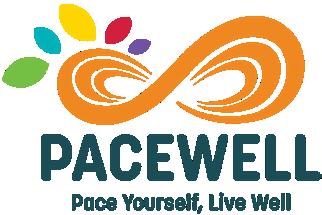


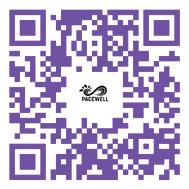
BY LINDSEY JOHNSON, MS, MCHES, CF-L2

November is Diabetes Awareness
Month and the perfect opportunity to get educated about your personal diabetes risk. One important piece of the puzzle is knowing your blood sugar numbers.
There are many ways to test blood sugar that give you an idea of how well your body is keeping glucose in range. At-home glucometers and continuous glucose monitors (CGM) are tools that can be used at home to check blood sugar at a specific point in time. These are useful tools for understanding how your body reacts to certain foods, illness and stress but are not recommended for everyone. If your provider thinks this would be beneficial for you, they will have you monitor for a month or so but will provide clinical oversight so you can accurately interpret results.
Routine bloodwork completed at a lab often includes a fasting glucose test, which measures your blood sugar at a specific moment in time after you have not eaten anything in eight hours or more. This is an effective measurement to determine risk.
Another lab test often used is a Hemoglobin A1C (A1C). This blood test measures an average of your blood sugar over a two-to-threemonth period, giving your provider critical information about a pattern of blood sugar management.
A third diagnostic test is called the Oral Glucose Tolerance Test (OGTT). This test is given to women during pregnancy to check for gestational diabetes but is also sometimes used to diagnose prediabetes and Type 2 diabetes. For this test, you fast for 8-12 hours prior, then drink a sugary solution that contains 75 grams of
glucose. Your blood sugar is tested before you drink the solution and again two hours later, when blood sugar tends to be at its highest after ingestion.
Screening guidelines are based on age, risk factors and personal history. The 2025 American Diabetes Association (ADA) Standards of Care recommends the following groups should be screened for prediabetes and Type 2 diabetes:
1. For adults who are overweight or obese and have any of the following risk factors:
• First-degree relativewith diabetes
• High-risk race, ethnicity and ancestry (African American, Latino, Native American, Asian American)
• History of cardiovascular disease
• High blood pressure
• Low HDL cholesterol or high triglyceride levels
• Polycystic Ovary Syndrome (PCOS)
• Physical inactivity
• Other clinical conditions associated with insulin resistance
2. People with prediabetes should be tested annually.
3. Women diagnosed with gestational diabetes should be checked every one to three years.
4. For all others, testing should begin at age 35.
5. With normal results, testing should be repeated at least every three years, or more often with additional risk factors and personal history.
6. Individuals in other high-risk groups should be closely monitored (people with HIV, exposure to high-risk medicines, evidence of periodontal disease, history of pancreatitis).


While some factors are out of our control, there are many ways we can help regulate blood sugar through general lifestyle and wellness practices. If your tests come back in the prediabetes range, ask your provider about a referral to the Diabetes Prevention Program (DPP) to learn how to best prevent prediabetes from becoming Type 2 diabetes. Some of the lifestyle factors you can address in the meantime include:
• Maintain a healthy body weight.
• Exercise 150+ minutes per week at moderate intensity.
• Choose high-fiber, minimally processed foods.
• Manage stress.
• Sleep seven to nine hours per night.
• Manage blood pressure and cholesterol levels.
While screening is helpful to see a pattern of blood sugars and if they are heading in the wrong direction, if you or a loved one experiences any of these symptoms, seek the advice of a professional for prompt screening and treatment:
• The “3 P’s”: Increased urination (polyuria), increased thirst (polydipsia), increased hunger (polyphagia).
• Unexplained weight loss (especially rapid weight loss)happens more often in Type 1 but can also occur in Type 2 diabetes.
• Extreme fatigue, blurred vision, slow-healing sores or infections or numbness/tingling in hands and/or feet (neuropathy).
• Symptoms of diabetic ketoacidosis (DKA) - Nausea, vomiting, abdominal pain, rapid breathing, confusion and fruity breath. This is an emergency most commonly seen in Type 1 diabetes (but can also be seen in Type 2) and requires immediate care. Can sometimes be the reason people seek medical intervention, resulting in a diabetes diagnosis.
This month, check in with yourself. Complete a risk assessment at https://diabetes.org/diabetes-risk-test to determine your risk factors. If you haven’t been screened lately, talk to your provider about whether it’s time for you to be screened. If you are aware once you have developed prediabetes, you can take steps towards effective blood sugar management and help prevent future complications.

After a lifetime together, don’t separate them now.
Aging in place is not only possible for couples – it’s better for all involved, from well-being to affordability. With Home Helpers® Home Care, both partners receive the personalized one-on-one care they need to stay safe, connected, and cared for—together.
Stay safe in the comfort of home
Personalized one-on-one care • Improved emotional well-being
Avoid anxiety of unfamiliar places
Reduce risk of depression • Lower long-term cost of care
Relieve family caregiver stress • Improved health outcomes
1880 S 14th Street, Suite 103 • Fernandina Beach, FL 32034
BY ALEXANDRA BURNS
We’ve all been there: strawberries spotted with mold on the back refrigerator shelf, a mason jar full of some concoction you haven’t touched in months.
To celebrate National Clear Out Your Refrigerator Day, which is Saturday, November 15, here is a step-by-step guide on how to efficiently clean out your refrigerator, so the next time you open that door, you're welcomed by a colorful, organized display of food, not moldy and forgotten clutter.
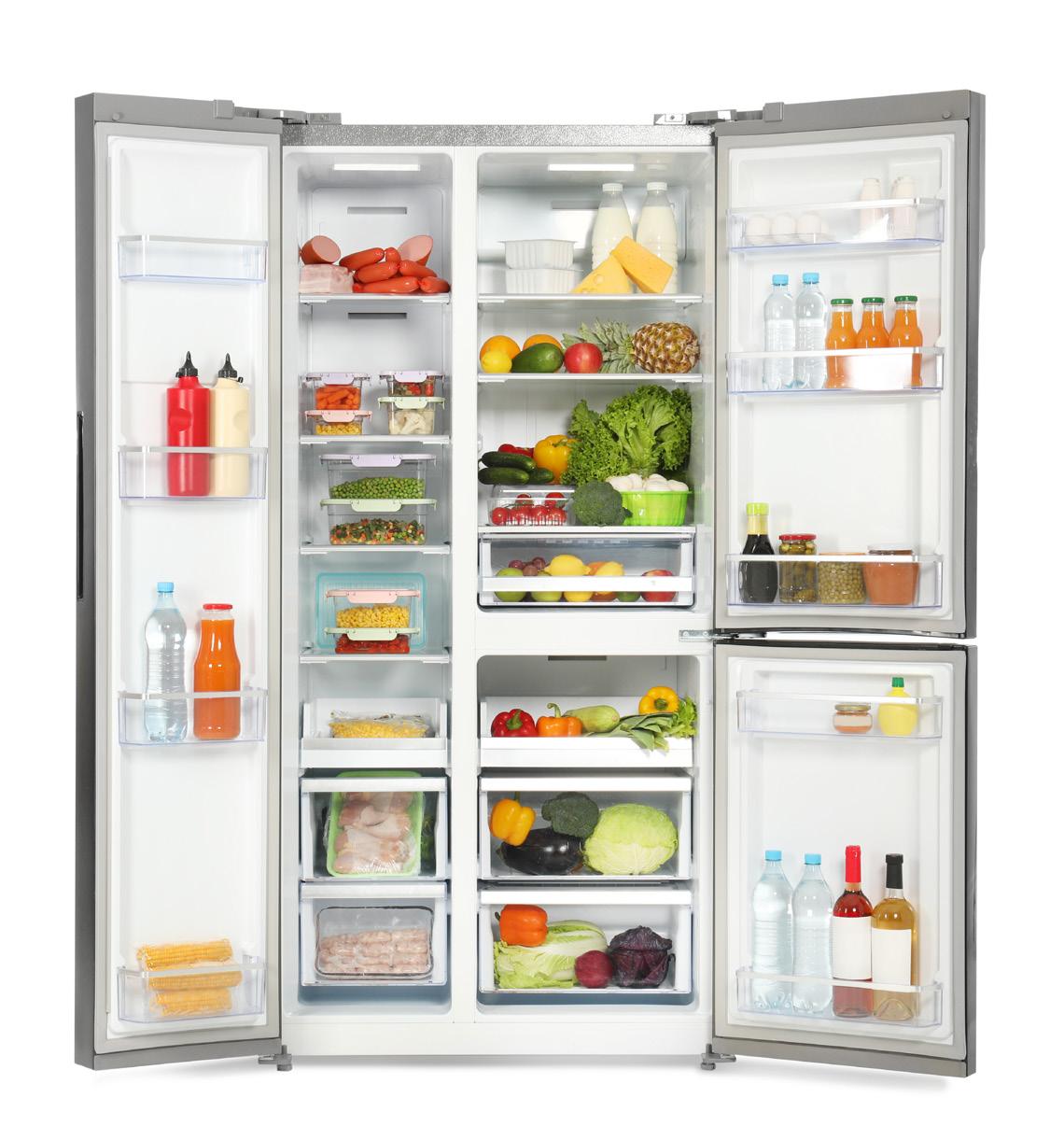
Organization isn’t about perfection. It’s about efficiency, reducing stress and improving your quality of life.
CHRISTINA SCALISE
To cover every nook and cranny of your fridge, remove all items, including non-perishables, and place them on a nearby counter or inside a cooler.
Check the expiration dates, smells and appearances of your food to ensure that there is no mold, expired items or meat and dairy that have gone bad.
Combine warm water with dish soap and grab a clean rag, sponge or paper towel to wipe down the inside of the fridge, including all drawers, shelves and doors. Follow this by mixing 1 tablespoon of liquid bleach with 1 gallon of water to sanitize all surfaces, as recommended by the Centers for Disease Control.
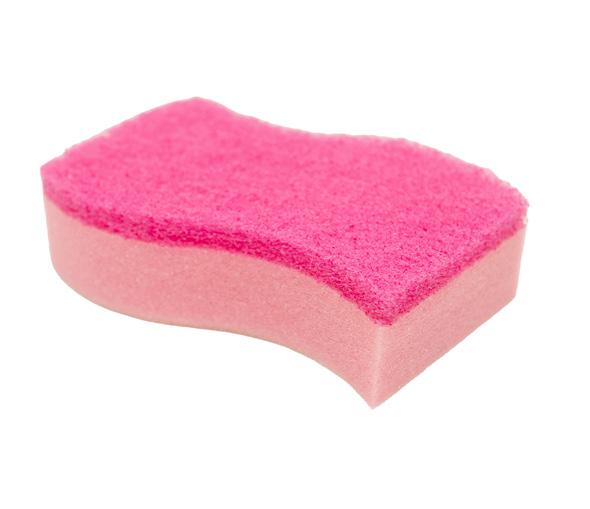
But be wary when using bleach to clean your fridge. According to articles from Whirlpool and The Kitchn, it is advised not to use harsh cleaning supplies like Clorox, Lysol or bleach because they can contaminate food with toxic chemicals and damage the materials of the fridge itself.
For those with sensitive noses, Whirlpool recommends using a mixture of 2 tablespoons of baking soda and 1 cup of hot water to wipe down the inside of the refrigerator, preventing a residue of chemicals and irritating smells.
To clean inside those small crevices, such as the ridges in the produce bin, Whirlpool suggests using a disposable toothbrush to scrub off buildup.
If there is a collection of crumbs at the bottom of the fridge or on its shelves, a handheld vacuum can be used to remove them.
Don't forget to unplug the fridge and wipe down its drip pan and condenser coil, which is often one of the most overlooked places in the kitchen to clean, according to an article from Real Simple.
After disposing of the molded items from your refrigerator, fill a spray bottle with distilled white vinegar and spray all sections of the fridge, including the mold. According to a TheKitchn article, allow the vinegar to sit on the mold for a couple of minutes before wiping it with a damp cloth or paper towel. Repeat until the mold is removed.
For extra precaution, place an open container of baking soda or lemon wedges inside the fridge to achieve a deodorizing effect and prevent foul odors, as recommended in the article.
To efficiently organize your fridge, start by separating all items into similar food groups: meats, eggs, cheese, vegetables, fruits and Tupperware leftovers or meal prep containers.
Designate each section of the fridge for a specific food group, and place your items in a way that makes it easy to grab. For example, if you use cream cheese every morning, place that in front of the shredded cheese that you maybe only use for the occasional taco night.

You can also organize your sections by refrigerator temperature. According to an AARP article, the fridge door is the warmest area, and the back of the fridge is the coldest. This makes the door the best location for items least likely to spoil, such as ketchup, and the back of the fridge for items like dairy and eggs, as suggested by AARP.
It is also recommended to purchase clear bins, which can be found at Target, Walmart, the dollar store or on Amazon, to create a more aesthetically pleasing fridge.
When you are struggling to find the motivation to clean out your fridge, remind yourself that the 10- to 30-minute task could improve your productivity and time management. Whether you are inviting friends over for dinner, rushing to grab a snack before work or planning a relaxing night of cooking, a clean and organized fridge prevents embarrassment and makes your life faster and stress-free.

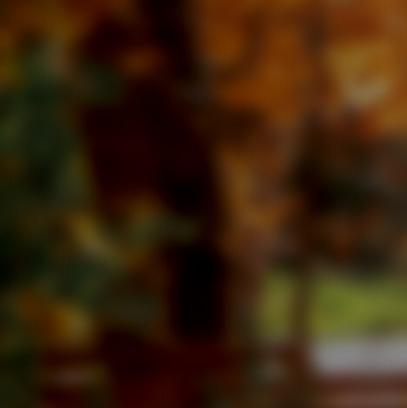







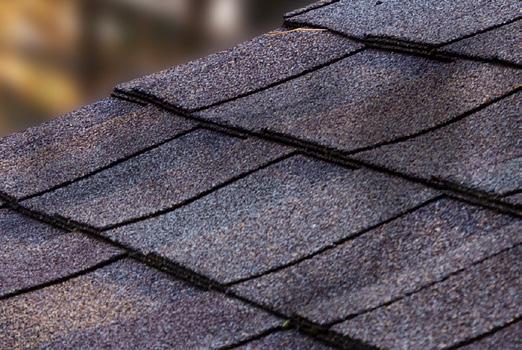
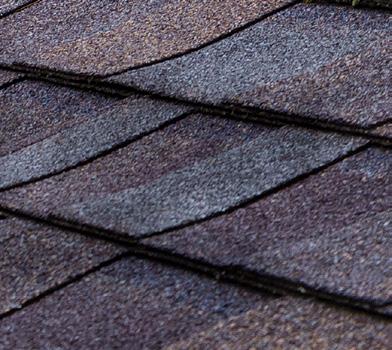


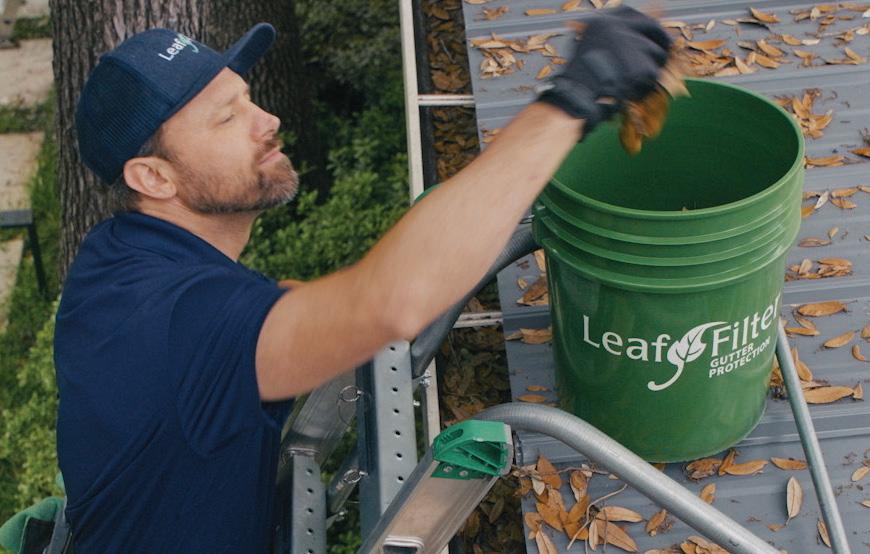



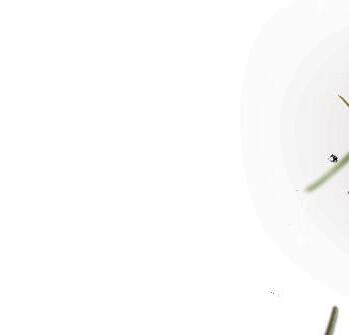










The holidays are a busy time, and it can be hard to stay consistent with your workout routine between visits with family, shopping, school performances and travel. This year, spice up your holiday workouts with a fun twist!
You’ve almost certainly heard the song “12 Days of Christmas”... “On the first day of Christmas, my true love sent to me a partridge in a pear tree. On the second day of Christmas, my true love sent to me two turtle doves and a partridge in a pear tree” and so on for 12 days, with each day building on the previous days. What if we did this with fitness movements?
Keep workouts short and focused and build upon your skills a little bit every day. This is a GREAT and easy start for beginners. So grab your family members (no excuses) and add a little fitness fun to your holiday celebrations. It will not only build physical strength but also connection with your loved ones.

Mark the calendar, set aside some time and MAKE IT HAPPEN!
Search YouTube for video demos of any movements you are unfamiliar with.
BEGINNER VERSION:
Add the new exercise each day, then complete the prior days. For example, on day three, you would complete: 3 burpees, 2 curtsy lunges and 1 inchworm.
INTERMEDIATE VERSION:
Add the new exercise each day, then complete the prior days. Complete two to three rounds. For example, on day three, you would complete: 3 burpees, 2 curtsy lunges and 1 inchworm then another 3 burpees, 2 curtsy lunges and 1 inchworm.
ADVANCED VERSION:
Complete it all in one workout. You still build upon the prior days but complete the whole thing in one day. For example, in round five, you would complete 5 air squats, 4 push-ups, 3 burpees, 2 curtsy lunges and 1 inchworm. Then in the next round (round six), you would complete 6 walking lunges, 5 air squats, 4 push-ups, 3 burpees, 2 curtsy lunges and 1 inchworm and so on.
DAY 1: 1 inchworm
Each day, start with the new movement, then complete all of the previous days.
DAY 7: 7 sit-ups
DAY 2: 2 curtsy lunges
DAY 3: 3 burpees
DAY 4: 4 push-ups*
DAY 5: 5 air squats
DAY 8: 8 skater hops
DAY 9: 9 jumping jacks
DAY 10: 10 broad jumps
DAY 11: 11 tricep dips
DAY 6: 6 walking lunges
DAY 12: 12 mountain climbers *Push-ups can be on the floor, from the knees, against an elevated surface or wall.






Dedicated To Enhancing Economic Vitality While Preserving Our Historic Heritage & Culture.
































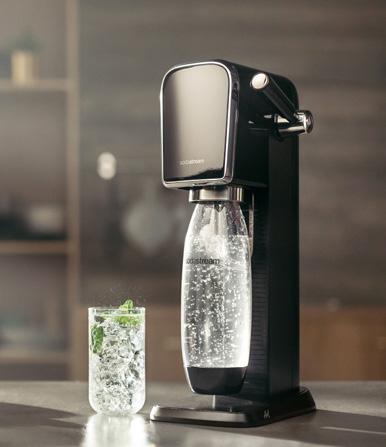
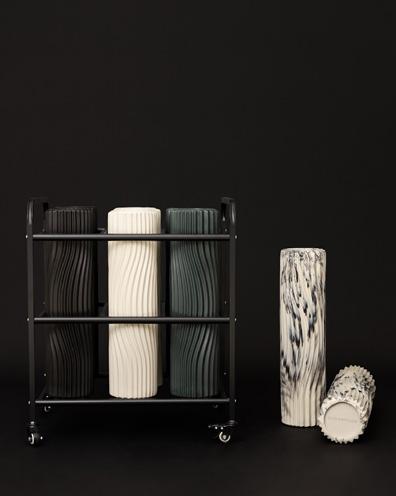






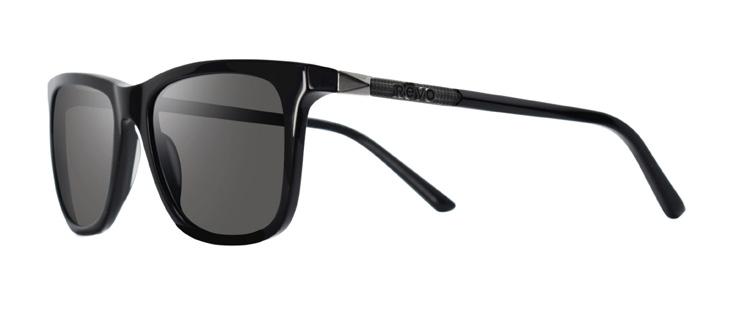





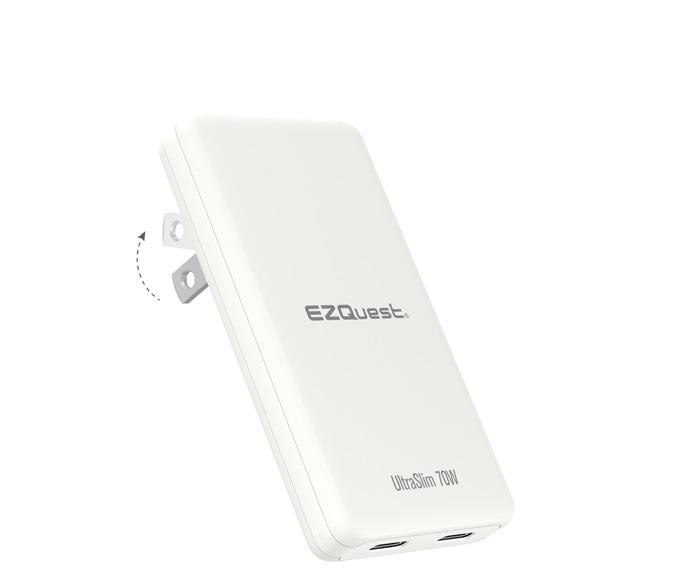


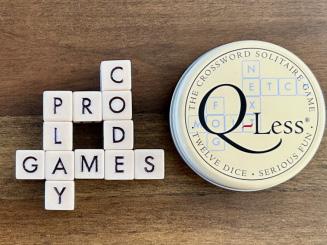










BY ALEXANDRA BURNS | PHOTOS PROVIDED BY ALEXANDRA BURNS
When I visited home during my senior year of college, I stood with my mother in my father’s master bathroom and slathered his face in shaving cream. As he sat motionless in his wheelchair, I gently held his arms in an attempt to keep him from ripping the razor from my mother’s hands. We spoke to him quietly, hoping to distract him from the strangers touching his stubbled chin.
He’d stare into the mirror. Then at the floor, scattered with a combination of grey and black hairs. And then at me. But there was nothing behind his eyes. I begged for a spark of recognition, a moment of clarity, though I was reaching for someone who had already left.
My father passed away in February this year, due to complications from early-onset Alzheimer’s disease. He was 58 years old when he was diagnosed. My twin brother and I were 14, just starting high school.
As horrifying as the words Alzheimer’s disease sound to me now, at the time, they seemed meaningless. I had heard the term briefly on national news when it announced breaking research or rising rates of diagnosis, showing clips of elderly couples wiping away tears throughout interviews.
During dinner, I often liked to ask Dad questions about his aunt, Eleanor, whom he had mentioned was diagnosed with the disease, describing it as an illness that “made adults behave like children.” Eleanor always perplexed me; Dad said she lived in an assisted living facility and liked to spend her days playing with dolls, and I naively pictured a calm, beautiful, put-together woman dressed like a child, dolls in her hand.
When my mother sat my brother and me down in our cousin’s backyard, my father by her side, and informed us of his diagnosis, we simply shrugged our shoulders and hoped that our silence could make the conversation end sooner. Dad never said a word until we sat down for dinner.
I couldn’t grasp the idea that my father, who was in seemingly perfect health — he frequently went to the doctor, jogged at least two miles a day and ate a regimented diet — could have anything wrong with him aside from his typical kidney stone. And as he stared at me on that moldy chair in my cousin’s backyard, and later smiled at my brother and me while driving us home from dinner, I thought, “Well, it doesn’t seem like anything is wrong with him?”
Many of the stories we often hear of Alzheimer’s, either through the news or distant friends or family, emphasize the concept of memory loss, yet fail to explain how the disease is much more complex than forgetting the names of your loved ones. I was never prepared for the fact that the brain loss associated with the disease affects every aspect of the victim, eating away at not only what makes them “them,” but also at their independence and basic human ability to function.
There had been minor signs of my father’s decline. Yet, for about two years before his diagnosis, my mom

believed many of the symptoms could be associated with the everyday stress of life — forgetfulness paired with aging, alcohol, depression or anxiety.
Mom noticed him misplacing house keys and books, forgetting his fried chicken recipe and becoming increasingly frustrated with his workload as a well-respected environmental attorney. Each weekend, Dad would sit in his silk living room chair, surrounded by legal pads, binders of cases and a black ballpoint pen in hand, yet stare endlessly at the documents, rereading them and rewriting notes. His ritual of reading the newspaper each Sunday morning transformed into an hour-long chaos of obsessive annotations scribbled throughout the paper.
After several months, he was asked to resign from work, and, according to Mom, he began to depend on her for almost everything. His decisions, emails and interview preparation became her burden to carry. As a man who took pride in his independence and, at times, viewed his intelligence as superior to others', his behavior immediately sounded alarms for her.
Mom recalled that Dad grew tired, napping throughout the day, and became irrationally frustrated when items were not where he had initially put them. After dinner one night, he briefly shouted at me for placing a glass plate in the “wrong spot” in the dishwasher, acting as if my placement had personally offended him.
Weary of the subtle changes in his behavior, but expecting a treatable diagnosis, my mother took Dad to his primary care doctor, who performed a series of tests: physicals, mini-mental state examinations, blood work and a sleep test. The doctor couldn’t find anything wrong with Dad; in fact, he exceeded each examination, even the mental ones.
Aside from a brief mental breakdown, when Dad sobbed as he failed to recognize my mother or our home, the changes in his behavior were almost unnoticeable. My mom tried to hide her anxiety from us, quietly carrying the weight of every doctor’s appointment


At 14, I was forced to become my father’s caretaker. During a time when I needed guidance the most, I found myself assuming the role of a parent, even though I, too, was still a child.
and unanswered question. It was clear to her, though, that Dad was struggling to communicate.
Under the impression that he might be depressed, Mom decided to take him to a psychologist who specialized in behavioral therapy. This was the first time a doctor acknowledged and validated my mother’s fears for Dad’s mental state, she said.
After being referred to a neurologist, Dad was officially diagnosed with Alzheimer’s disease from a PET scan, which detected the plaque that had begun to deteriorate his brain.
The first few months after my father’s diagnosis were relatively straightforward; in addition to my lack of knowledge about the disease, his behavioral changes were so minor that it was easy to ignore the impending threats of his condition. Though he suffered from moments of confusion and often forgot my friends’ names or small details from stories about my classes, he still behaved “normally.”
I only began to truly accept my father’s condition when the unwavering signs of the disease were directly in front of me. About two to three years after his diagnosis, he became increasingly obsessive compulsive, causing him to repeatedly circle the house, pick up papers and move them around, fix the pillows on the couch and hide my laptop and textbooks. He would swim back and forth in the pool, walk to the end of the street, come back inside, then return to the activity, repeating this almost all day.
Dad was at peace and clearly content with his life, but he was also becoming more childlike, unable to make his own decisions and often disoriented. I began testing his memory, hoping to better understand what he could recall about our relationship. One night, I asked him to watch a comedy movie with me, one of our former favorite activities, to see if he could follow the plot. He stared at the movie, confused, repeatedly asking questions and laughing when there was nothing to laugh at, almost as if it were a performance of normalcy.
Soon, his speech began to falter. He’d stutter in between phrases, aware of his shortcomings and clearly frustrated with his inability to construct precise statements. He would stop in the middle of a sentence, searching his brain for the correct vocabulary and squinting his eyes in intense focus.
His obsessive compulsiveness progressed to him constantly picking at every object in our home, leading my mom to hide the knives and often prevent him from going into the kitchen. My brother and I were not allowed to keep personal items in the living room, unless we wanted Dad to stick them in his mouth, throw them in the toilet or break them.
Eventually, after I moved four hours away to college, his speech turned into a different language, a series of long pauses and jumbled words. We would often nod in approval and say, “I know” or “yes, Dad,” to help him feel understood.

I was forced to become my father’s caretaker at 14. During a time when I needed guidance the most, I found myself assuming the role of a parent, even though I, too, was still a child.
As the disease attacked Dad’s brain, stealing from him his past and his future, he transformed into a 5-foot11 infant, and he began to reluctantly depend on my mom, brother and me.
His inability to communicate and understand his needs led to frustrated grunts or tantrums when he didn’t get what he wanted, could not verbalize what he needed or did not want to accept assistance.
He could never be left alone. Mom set up security systems throughout the house and took him with her on every errand. My brother slept during the day and stood awake at night in case Dad, who had become nocturnal and often banged around the house when it was dark, needed help going to the bathroom or became frightened.
While I only had to assist when I was visiting home from college, my brother and mother spent each second of the day tending to his every need — dressing him, taking 30 minutes to convince him to put on a jacket, checking in to see if he needed to use the restroom, brushing his hair and teeth, feeding and showering him, providing entertainment and preventing him from wandering away from the house, which was a constant battle.
The most exhausting aspect of Alzheimer’s, aside from the grief and physical toll of caregiving, was the disease’s unpredictability. It was as if, with a snap of a finger, a new symptom would appear, with no warning. Doctors could also rarely provide an answer for the timing and progression of my father’s symptoms, leaving my family in the dark on what to expect and when. We spent the years wondering when something could go wrong or waiting for a new “terrible” symptom to pop up.
Unfortunately, aggression was one of those symptoms. It began with occasional moments of yelling or swinging his arms in frustration, typically triggered by his sense of inadequacy. He was convinced
that my brother and I were working to “get him in trouble,” and he’d resent any form of guidance or assistance. As he failed to recognize me, transitioning from once believing I was a friend to a complete stranger, my touch became alarming and overwhelming. If I attempted to help him put on his seatbelt or his sweatshirt, he would immediately scream obscenities and swat my hand away.
As the days passed and his aggression worsened, Dad became unrecognizable. He couldn't remember how to swallow or perceive hunger, causing him to lose significant weight. His cheeks sank, and his skin sagged over the sharp edges of his bones. He struggled to control his muscular functions, leading him to accidentally urinate or defecate in his pants or on the floor, eventually causing our family to dress him in diapers after every shower.
The severe aggression ingrained itself in my mind, making it difficult to remember the calmer moments of the disease, in addition to the man my father was.
When doctors decided that Dad’s body had begun to shut down, they recommended that my mom send him to hospice.
I visited him to say goodbye at the beginning of his week-long stay, yet once I sat beside him, I was taken aback by my loss for words. I had already said goodbye years ago; there was nothing left to say. As I brushed his leathery and thinning skin with my fingertips and listened to his ragged breaths, I attempted to permanently burn the memory of what his skin felt like in my mind. Though some individuals might aim to forget an experience such as this, I wanted to remember it as clearly as possible, since it marked the end of about eight years of what seemed to be endless suffering for my father and my family.
I used to share my father’s diagnosis openly with friends and strangers, possibly with the hope that my casualty about the situation could lessen the pain or make it feel more “normal.”
Friends would say, “I’m so sorry, that’s so terrible,” and I’d shrug my shoulders and respond with, “It’s okay, he’s had it for a long time, I’m used to it.”
As eight months have passed since his death, I’ve realized that his diagnosis and his death were not okay, and never will be. Alzheimer’s is a truly disgusting, life-altering, painful and morbid illness. Aside from the opportunity to offer comfort to someone you love so deeply, caring for an

Alzheimer’s disease is a form of dementia that leads to memory loss and affects cognitive abilities, such as difficulty talking and walking, confusion, aggression, disorientation and behavioral changes, according to the Alzheimer’s Association.
According to the Alzheimer’s Association, 7.2 million Americans aged 65 and older are estimated to be living with Alzheimer’s disease in 2025.
Almost 580,000 Floridians aged 65 or older were estimated to be living with Alzheimer’s disease in 2020, according to the Alzheimer’s Association.
There is currently no cure for the disease, yet recent research shows hope for future treatments and drugs to slow the cognitive decline from the disease.
According to the Alzheimer’s Association, there were 11,926 reported caregivers of people with Alzheimer's disease or other forms of dementia in the U.S. in 2024.


If you are educated on the early signs of Alzheimer’s and dementia, you might be able to help a family member or friend get a head start on planning, including finding doctors, financial support and medical and therapeutic advice. It can also prevent a loved one who lives alone from suffering from the disease without any assistance or supervision.
The Alzheimer’s Association is an incredible resource, not just for caregivers hoping to gain support, assistance and learn more information, but for the general public. The organization also offers a 24/7 hotline that can provide resources for caregivers.
Sometimes, all a caregiver needs is a friend or a moment of peace and distraction. Visit the Alzheimer’s Association website to find a walk in your area, where you can offer support to those grieving a loved one to the disease or caregiving.
Nonprofits such as the Alzheimer’s Foundation of America and the Alzheimer’s Association offer options on their websites to donate, and money goes toward funding research for treatments and cures in addition to resources and support for caregivers and families.
individual with the disease and watching someone you love disappear in front of you is one of the most difficult things I've faced; it makes you question yourself and your stamina and pushes your physical and mental limits, leaving you to wonder, when will this end, and what did they do to deserve this?
My father’s illness became a testament to the fact that terrible and sickening events can happen in a second — children die, undeserving people are diagnosed with life-altering diseases, loved ones lose jobs and relationships end — and sometimes there is no good reason. My dad never deserved to lose his memory, to miss out on watching his children graduate from college or to spend his remaining years helpless and terrified. Yet he did. And all I could do was eventually pick myself up off the floor and walk through the pain, carry it with me, hoping that one day it wouldn't hurt as badly.
And no one can do it alone. Alzheimer’s disease, similar to any form of emotional or physical disability, requires an unwavering support team to allow you to provide physical care without sacrificing your sanity. My therapist compared a support system to a dining room table; when a leg breaks, the whole table falls.
Secure something or someone so that, when life feels like one setback after another, there is something permanent to look forward to or someone to hold your hand and make you laugh through the tears. My father’s illness made the positive moments, like family dinners and worry-free nights, seem incredibly rare. I often depended on those brief moments with my loved ones to remind me that I could still have sparks of calmness while grieving.
When I sat at our family dining room table, an hour before midnight, typing furiously and begging my mother for feedback on my college essay, we agreed that my father should have been the one to critique my grammar with his highlighter and red pen. While our whispers circled over the table, Dad lay in his La-Z-Boy chair, breathing and mumbling, overhearing our wishes but not understanding them.
Alzheimer’s disease leads to two deaths — the soul and the body. Though the diagnosis offers an extended period to
grieve the victim’s loss, before their mind fades further away, you are forced to watch their intelligence, personality and memories die long before their body.
Though I felt an overwhelming sense of relief the morning of Dad’s passing, I’ve noticed a much larger hole in my life than expected. A longing for my dad has replaced the relief, although, at times, I’m unsure whether my imagination has partially fabricated my memory of him, given it's been about eight years since I really knew him.
Each time I wrote an article during my undergrad, before clicking the “Submit” button, I ached for the chance to Facetime Dad for journalism advice instead of asking a classmate. When I struggled to wipe the tears off my face and get out of bed after my last breakup, I pictured him walking into my room and awkwardly dancing before quoting, “All men are bastards” from the 1995 film “French Kiss.” As I made homemade pizza sauce with my roommate’s father, I wished it could have been with Dad standing by my side instead. And when I walked the stage at graduation, rather than feeling like Dad was “with me,” as many people say to expect, I couldn’t shake the feeling that something was missing.
I’ve finally allowed myself to cry about my father’s diagnosis and death. I long for a version of life where I still have my dad — where I never had to watch him forget and slowly despise me, and where I can still be excited for a future that includes him. But as much as I wish the situation were different, some losses can't be prevented, and they can’t be undone.
I’ve permitted myself to dwell in the frustration; my mom often says we have to sit with being uncomfortable before we can notice change. But I hope the anger never leaves me. It’s filled me with a curiosity for the force that pushes people out of bed on their darkest days, the reason why people keep living when their life partners are ripped away without warning. Despite the cruelty of life, why do we keep going, especially if it can be taken away in a second? And what is it in my life that allows me to look toward the future, even if I ache for it to be different? There must be a reason why I’ve continued to move forward, holding both the pain and the beauty, even if I haven’t figured out all the answers yet.


Honeycrisp salad with probiotic-rich kefir dressing

BY ALEXANDRA BURNS
From mulled kombucha to probioticrich sauerkraut on holiday tables, here is how gut health can join the Thanksgiving celebration, allowing you to leave the dinner table without clutching your stomach in pain.
Your gut consists of your gastrointestinal system, including your stomach, intestines and colon. This system is responsible for absorbing all of the nutrients from your food and removing waste.
The Better Health Channel refers to gut health as “having a healthy gut microbiome and limited digestive symptoms.”
This gut microbiome consists of about 200 different species of bacteria, viruses and fungi inside your large intestine, according to Better Health. Some forms of bacteria are beneficial for a healthy body to “ferment” or break down food,
while others can lead to diseases and uncomfortable symptoms.
Positive gut health can leave us feeling stronger, well-rested, more clearminded and not stuck in the bathroom after every meal.
According to UC Health, positive gut health can stabilize our blood sugar, regulate our weight and boost our immune system. Our gut contains 70% of our immune tissue, according to UC Health, and it is associated with how our body can fight off certain infections and battle diseases.
Our gut health is also tied to our mental health and hormones. UC Health explained how most of our immune system and serotonin production is in our gut, so poor gut health can mean lower serotonin. This can show up in sleep, anxiety, digestion and libido, according to the article.
Harmful bacteria and fungi in your gut can lead to fatigue, a consistently upset stomach, sugar cravings, unintentional weight gain or loss, migraines and skin irritation, according to Frederick Health. Individuals with poor gut health could also suffer from gas, bloating, cramping, difficulty sleeping, intense mood swings, food intolerances and autoimmune issues.
Negative gut health is associated with irritable bowel syndrome (IBS) and gastroesophageal reflux disease (GERD), according to articles from Frontiers and XHP Publishing.
There is also a connection between poor gut health and yeast infections in women, according to an article from Dr. Vegan.
When picking a Thanksgiving dinner menu that can improve your gut health, look for low-processed and low-sugar foods with prebiotics or probiotics, which are live bacteria and yeast that have a positive benefit on your body, according to the Cleveland Clinic.
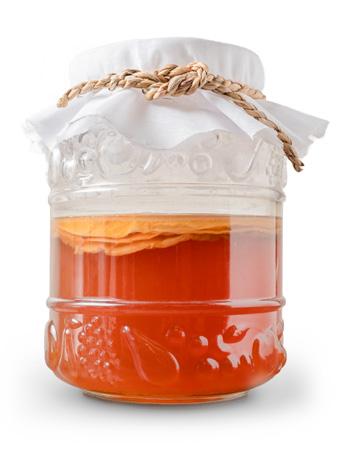
This can include substituting dairy with yogurt in your baked goods to add moistness and create a probiotic effect. You can also serve dishes like mulled kombucha, a fermented tea, or probiotic-rich sauerkraut, a fermented cabbage dish.
Other examples, according to an article and recipes from Lifeway, include:
• Stuffing with sourdough bread (rich in prebiotics)
• Roasted carrots with farmer’s cheese (contains probiotics)
• Honeycrisp salad with probiotic-rich kefir dressing
• Turkey brine with infused probiotics

BY ALEXANDRA BURNS
We’ve all tried the classic carrot cake. But with brown butter and olive oil, this recipe takes your carrot cake to the next level, developing a rich, nutty flavor with a texture that almost melts on your tongue. Covered in a whipped brown butter and cream cheese frosting, this cake is perfect for impressing guests and serving at Thanksgiving dinner. It is also rich in antioxidants, vitamins and anti-inflammatory ingredients due to the olive oil and carrots.
● 2 ½ cups grated carrots
● ¼ cup brown butter (made from browning salted sweet cream butter)
● 2 ¼ cup flour - all-purpose
● ¼ cup cornstarch
● 2 tsp baking powder
● ½ tsp baking soda
● 1 tsp salt
● 2½ - 3 tsp cinnamonground
● ½ tsp ginger
● ½ tsp nutmeg
● ⅛ tsp cardamom - ground (optional)
● 1 ½ cup light brown sugar
● 3 large eggs - room temperature
● ½ cup olive oil
● 3 tsp vanilla extract
● ¾ cup buttermilk
● ¾ cup room temperature cream cheese
● 3 tbsp brown butter, melted
● 1 ½ cup powdered sugar
● 2 tsp vanilla extract
● 2 cups heavy whipping cream, cold (if warm, your frosting will not have that whipped effect)
● 1 cup crushed pecans, walnuts or both
● Non-toxic and edible flowers (examples include dandelions, nasturtiums and marigolds)

1. Preheat your oven to 335 F and grease and flour two 8-inch circular cake pans. Place a layer of parchment paper on the bottom of each cake pan.
2. Grate carrots and combine with flour, cornstarch, baking powder, baking soda and salt.
3. As you whisk the mixture, slowly pour in your brown butter. Mix until fully combined.
4. Add in all your spices and light brown sugar.
5. Mix in your eggs, one at a time, and slowly pour in your olive oil and buttermilk while mixing.
6. Incorporate your vanilla extract.
7. After pouring your batter into the pans, hold the pans a couple of inches above the counter and drop them. This eliminates any bubbles or uneven spaces.
8. Place your cakes in the oven for 30 to 35 minutes, until they appear golden orange and a toothpick inserted into the center comes out clean. Allow them to cool completely before frosting.
1. Place your room-temperature cream cheese in a bowl and use a hand mixer on high speed to soften it.
2. Use the mixer to combine the powdered sugar with the cream cheese.
3. Add in your brown butter and vanilla extract. Mix on high speed until the mixture is fully incorporated. If you think your frosting is too thin or liquidy, add in a little bit more powdered sugar to thicken it up.
4. Slowly pour in the heavy whipping cream and mix on full speed for about 2 to 8 minutes to form stiff, white peaks. It should have a consistency similar to whipped cream.









BY COLE PURVIS
During the holidays, mugs of cocoa, glasses of wine and steaming cups of coffee are staples of celebration. But behind the comfort and cheer lies a quiet risk: dehydration. Understanding how these drinks affect the body can help keep the season merry without the sluggish side effects.
Alcohol, caffeine and sugar (the cornerstones of many holiday drinks) can each contribute to fluid loss.
According to Verywell Health, alcohol suppresses vasopressin, a hormone that helps the body retain water. When levels drop, the kidneys excrete more fluid as urine, leaving you dehydrated and depleted of electrolytes. That means festive drinks like mulled wine or spiked cider do more than warm your spirits. They can quietly drain your hydration reserves.
Caffeine has a similar, though milder, effect. Research published in MDPI
shows that caffeinated beverages like coffee and cocoa increase urine output, causing small but noticeable shifts in fluid balance. Cocoa’s natural compound theobromine acts in a similar way, though less potently.
However, habitual coffee drinkers may be better adapted. A study published through the National Institutes of Health found that people who regularly consumed moderate amounts of coffee maintained hydration levels comparable to those who drank water. Still, when caffeine and alcohol are combined, or consumed in excess, the dehydrating effects can compound.
Even mild dehydration can influence how you feel. The Centers for Disease Control and Prevention notes that low fluid levels affect energy, mood and concentration, while also impacting physical performance. Over several days of indulgence, that dryness can lead to headaches, fatigue, dizziness and even heart strain.
Doctors sometimes refer to this as “holiday heart syndrome” — when dehydration and excess alcohol combine to stress the cardiovascular system, occasionally triggering irregular heartbeats. According to the Cleveland Clinic, staying hydrated is one of the simplest ways to reduce those risks.
Dehydration also slows how the body processes alcohol and caffeine, making hangovers and energy crashes more severe. In short, the less water you drink, the more the holiday cheer takes a toll.
The good news: you don’t need to skip your favorite drinks. Small adjustments can keep the celebration balanced. Start each gathering with a full glass of water, and alternate between festive drinks and hydration breaks. Adding an electrolyte tablet or pinch of salt can improve absorption, especially if you’re drinking alcohol.
For every glass of wine, follow with sparkling water or herbal tea. Choose lighter options, like decaf hot chocolate or lower-alcohol spritzers, to keep hydration steady.
According to the Mayo Clinic, indoor heating, cold weather and air travel can all increase dehydration risk, so upping your water intake during winter months is crucial. Pair holiday treats with hydrating foods like fruit, soup or vegetables to further offset losses.
And remember: thirst is a late signal. Sip water regularly throughout the day, not just when you feel dry.
Hydration doesn’t mean deprivation. It means enjoying the holidays with more energy and fewer headaches. By recognizing that wine, cocoa and coffee come with hidden costs, you can plan ahead and keep your body running smoothly.
So, raise your glass this season, but make sure there’s some water in it, too.
BY REAGAN POLAND
The persimmon is a vibrant, juicy fruit that is often overlooked, but persimmons, both fresh and dried, are packed with health benefits you may not know about! With their peak season in November, this fruit is ripe for your picking!
Popular in Japan and China, this tropical fruit is high in bioactive compounds, fiber and antioxidant activity. Its benefits include its ability to combat free-radical production, high cholesterol, diabetes, cancer, skin disorders and more, according to the National Library of Medicine.
Related to the date plum, persimmons have a soft, date-like texture paired with a honey-like flavor. There are two families of the fruit: astringent and non-astringent. The Fuyu strain is common in the U.S. It is non-astringent, meaning it can be eaten ripe or unripe. Unripe, it is crisp like an apple or pear, per Serious Eats. Astringent persimmons can only be consumed ripe; the Hachiya family is an example. At the end of their growth they are full of sugars, glowing with a bright orange color, making this the perfect time for consumption.
This smooth, glossy fruit, often round or slightly oval, contains major phytochemicals – naturally occurring compounds that play a role in supporting human health. These include carotenoids, tannins, phenolic compounds, proanthocyanidins (secondary metabolites that safeguard against problems like
environmental stress) and catechins (protection against ailments). Persimmons contain 55% of one’s daily vitamin A intake, according to heart.org, as well as high levels of vitamin C. Adding persimmon into your diet can enhance coronary function, as the small fruit can improve plasma lipid metabolism and antioxidant activity, according to a study published in the National Library of Medicine.
Although this fruit is tasty on its own, it can add dimension to your favorite meals. Adding sliced persimmon to the salad of your choosing brings a summery touch and sweet, citrus flavor. If your go-to breakfast is yogurt or oatmeal, throw on some persimmon! Charcuterie boards are always the perfect appetizer. Luckily, persimmons pair very well with cheese, prosciutto, nuts and roasted meats. And if you're on the go, this fruit, like an apple, is perfect for a quick snack break. Next time you're at the store, don’t overlook this shiny orange fruit! Persimmons can bring flavor and health benefits to your daily routine.

BY KENDRA MILLER

You probably visit your doctor once a year for a checkup, but there's something else to pencil on the calendar: an annual review of your utilities and insurance. An annual review is a great opportunity to determine if there are cost-saving changes you can make to your household expenses before the start of a new year.
Here are some tips on performing a review of your utilities and insurance:
1. REVIEW ENTERTAINMENT UTILIZATION
Review your monthly cable, internet and cellphone bills to determine if you are paying for services you no longer use. Cut premium channels and sports packages if they are not being watched or remove the channel when the season is over. If you find you aren’t using many of the channels at all, cut the cord and consider transferring to streaming services. Talk to your cellular provider to see if you are on the best plan based on your usage.
2. SERVICES OR NEGOTIATE RATES
Consider bundling services to reduce rates. Call your cable company and ask if there are deals available for cheaper packages, but avoid contracts. You often end up paying more and lose your leverage to cancel your service. Many cellphone providers also now offer plan options that include streaming service subscriptions.
3. PERFORM AN ENERGY
Florida is not an “energy choice” state where individuals can choose their energy provider, so making sure you are utilizing energy efficiently is key to reducing your monthly electric bill. You can hire a professional to perform an energy audit of your home, but this can be costly. Instead, a quick DIY inspection of your home checking for drafty windows, old water heaters, air flow under exterior doors and attic hatches that are not airtight can help make a difference in your power bill.
Major life events or changes in lifestyle through the year can change your insurance needs. Did you buy a house this year? Make sure you have an appropriate amount of life insurance or disability insurance for income protection to cover your mortgage. Check your homeowners/renter’s insurance policy to ensure your limits are sufficient to cover your assets, and depending on your location, you may need flood insurance.
Re-evaluate health insurance needs such as medical, dental and vision coverage, and be aware of your current insurance company's open enrollment period. November is often the beginning of open enrollment for the health insurance marketplace and workplace health insurance plans. Review other options to determine if there is a more affordable plan that meets your needs.
If you are looking to decrease your home or car insurance spending, consider switching companies or raising deductibles to lower premiums. If your car is older, consider dropping comprehensive and collision coverage. You can also save money by bundling policies under one company and taking advantage of any discounts available for safe driving.
Spending a little time each year using these tips can help make a big difference on your household expenses.






BY DR. JENNIFER MARTIN, LICENSED CLINICAL PSYCHOLOGIST
Many people have shared that 2025 was a challenging year – one that affected morale, energy and mood. As a nation, we have experienced social isolation, economic fluctuations, political division and violence, which have taken a toll on our collective mental health. It’s natural, then, to enter the new year with mixed emotions. As we step into 2026, consider trying one of these activities to help you close 2025 with increased clarity, and open the next year with more intention and empowerment.
A traditional bucket list involves identifying goals, dreams and experiences we hope to achieve in the future. A Reverse Bucket List flips that idea around. Instead of focusing on what you haven’t done yet, you reflect on what you’ve already
accomplished and experienced in your life that fills you with pride, gratitude and joy. Look at old photographs, journals or calendars, or invite friends or family to help you remember these personal wins. Think of the Reverse Bucket List as your personal “Greatest Hits” catalog. Things to include:
• Life lessons or challenges you’ve overcome
• Skills, hobbies or courses completed
• Personal growth milestones or goals you’ve achieved
• Relationships you’ve nurtured or adventures taken
• Habits or routines that have improved your life
• Consider things that are personal, professional, spiritual, financial or health-related
Benefits of doing this exercise include increased gratitude, life satisfaction and confidence as you move into this next year.
Use your calendar or planner to look back over the past year week by week. Create a list of what activities, places, people, experiences, commitments, etc. sparked strong emotions –positive and negative. Next, sort them into two categories: positive and negative. Then, from each list, highlight the top 20% that had the greatest impacts on your well-being.
• Your Positive Top 20% becomes your “To Do” list for 2026 – what to prioritize and continue to make room for.
• Your Negative Top 20% becomes your “Not to Do” list –what to minimize, avoid or set firmer boundaries around.
Schedule your “To Do” items into your calendar for this upcoming year, and just as intentionally, give yourself permission to stay away from the “Not to Do” items.
While it may sound morbid, writing your own obituary can be a meaningful and clarifying experience. Ask yourself:
• How do I want to be remembered?
• What do I want my greatest accomplishments or contributions to be?
This reflection uses a strategy called Backward Planning, where you start with your ideal outcome and work backward to identify the steps required to get there. When you clearly define what truly matters to you, it becomes easier to schedule the year and prioritize your time, energy and choices in ways that align with your values and long-term vision.
Personal reflection allows you to learn from the past and move forward with more purpose and intention. Whether you focus on your learning and gratitude through a Reverse Bucket List, End-of-Year Review or writing your obituary, I hope you enter 2026 with great awareness and intention.

BY COLE PURVIS
For many, cooking is just a way to eat. But more mental health clinicians are exploring whether cooking, baking and meal planning can do more, helping reduce stress, heal trauma and ease anxiety.
Research suggests that cooking may support mental well-being. A systematic review published in Health Education & Behavior found that among 11 studies involving adults, cooking or food preparation programs were linked with improved mood, socialization, self-esteem and overall quality of life.
In one study of psychiatric inpatients with depression or eating disorders, participants who took part in cooking workshops reported significant drops in sadness, hopelessness and tiredness. Most said they would recommend the workshops to others in recovery.
Another study of patients with eating disorders found that as dietary variety increased, their “food anxiety” decreased, a sign that gaining confidence in the kitchen can build self-efficacy around eating.
Experts believe cooking helps through mechanisms like behavioral activation — engaging in structured, goal-oriented activity that combats the inertia often seen in depression. According to mental health professionals interviewed by Southern Living, following a recipe and completing each step provides a sense of accomplishment and control.
Cooking also demands focus, drawing attention to sights, sounds and smells in the present moment. This can mimic the mindfulness effect found in meditation, quieting anxious or intrusive thoughts, according to Food & Wine.
Beyond the act of cooking itself, preparing and sharing food with others can strengthen social ties. Cooking classes and community kitchens are increasingly used as therapeutic spaces for connection. According to Verywell Health, people who cook with others often feel less isolated and more confident in their abilities.
Eating together also provides a natural context for conversation, laughter and shared experience. These are simple but powerful buffers against loneliness and stress.
While promising, edible therapy isn’t a cure-all. Many of the existing studies are small, short-term or nonrandomized. The review in Health Education & Behavior noted that sample sizes were often limited and outcome measures inconsistent.

Cooking can also trigger stress for some individuals. For people with trauma, obsessive-compulsive tendencies or certain eating disorders, being in the kitchen can stir up difficult emotions or perfectionist
pressure. According to researchers in Frontiers in Psychology, cooking should be approached as a complementary practice and not a replacement for professional treatment.
Those interested in using cooking as a mental health tool can start small. Choose simple recipes that engage the senses in positive ways: bright colors, comforting aromas, enjoyable textures. Plan meals loosely to avoid stress, and cook with a friend or partner when possible.
Pairing cooking with other coping methods, such as mindfulness, journaling or therapy, can amplify its benefits.
Cooking, baking and mindful meal preparation are emerging as accessible ways to promote calm and connection. According to researchers and therapists alike, the kitchen can become more than a place to feed the body. It can also nourish the mind.
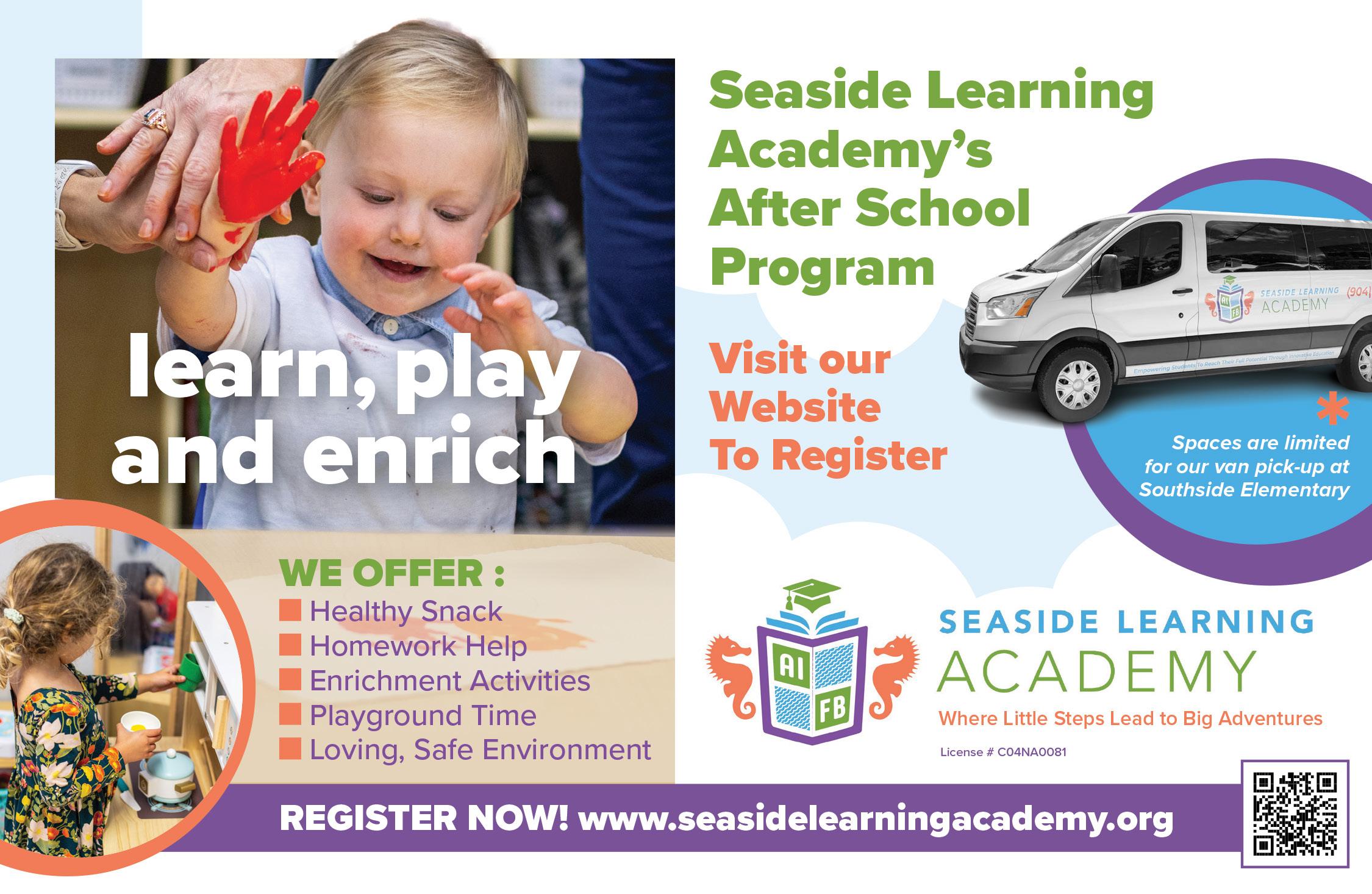
BY DANIELLE SPANO
Hanging stockings, intentionally wearing horrendous sweaters, exchanging questionable cakes or leaving cookies for a visitor in the night are just a few of the ways we celebrate the holiday season in the United States. As odd as these might seem to even Americans, there are some fun and quirky traditions around the world that might have American traditions beat.
Think a silver, tinsel Christmas tree is strange here? Well, other countries might have that beat! For luck and prosperity, Ukrainians decorate their trees with spider webs (fake, thankfully). In India, you won’t find the beautiful evergreens trimmed, but instead, you will find decorated mango trees and banana trees. If you are in the market for a unique nativity scene, head to Oaxaca, Mexico for the Night of the Radishes, where you will find oversized radish carvings galore at the annual event.
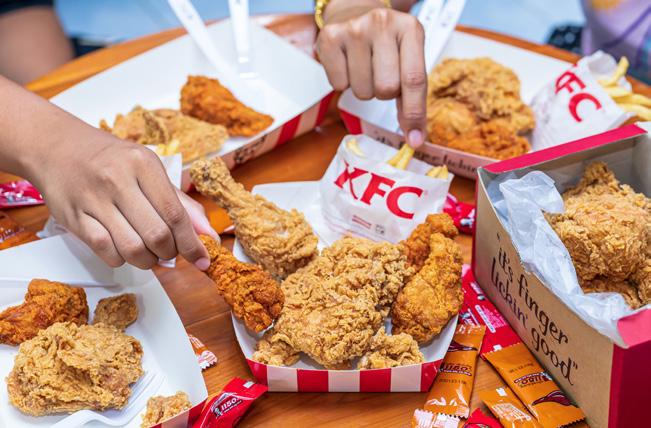
The Japanese will wait hours in line to get their bucket of Kentucky Fried Chicken as a result of a successful advertising campaign in the 1970s. In South Africa, you might find the Emperor Moth served deep-fried, as this is a popular Christmas Day dish. Not a fan of fruitcake? Well, you might want to head to Portugal and try its cross between fruitcake and king cake to make Bolo Rei, which has a prize hidden in the cake and brings the finder luck (as well as responsibility for bringing the cake next year).

Instead of a lump of coal from Santa, in Austria, Germany and Hungary a Christmas devil known as Krampus will punish disobedient children. In Iceland, you better look nice for Christmas because if not, the Yuletide Cat may eat you! South Africans protect Santa’s cookies from hungry children by telling a tale of a boy who ate them and was killed! In Greece, evil goblins are said to come out at night during the 12 days leading up to Christmas to cause mischief. There will be no cleaning up after those goblins if you are in Norway, as brooms are hidden on Christmas Eve to keep them from being stolen by witches.
Throughout the holiday season, Italians play tombola, a bingo-like game. In Germany, it is said that the first child to discover a hidden pickle in the tree on Christmas morning receives a prize. Ethiopians have never really celebrated Christmas, despite its strong Christian culture, but instead play a hockey-like game called Ganna once a year on Christmas afternoon.
Throughout the holiday season, Italians play TOMBOLA, a bingo-like game.

If your stockings are hung by the chimney with care, how do you wear shoes to the traditional Christmas morning mass in Venezuela? You roller skate! In Portugal and the Netherlands, children leave one shoe next to the chimney to be filled instead of a stocking. German and Brazilian youth leave their shoe outside to be filled with sweets, but beware, as naughty children wind up with a tree branch in Germany! In Iceland, 13 ogre-like Santas called ‘yule lads’ leave gifts in shoes for 13 nights leading to Christmas, but those who misbehave get a rotten potato.



























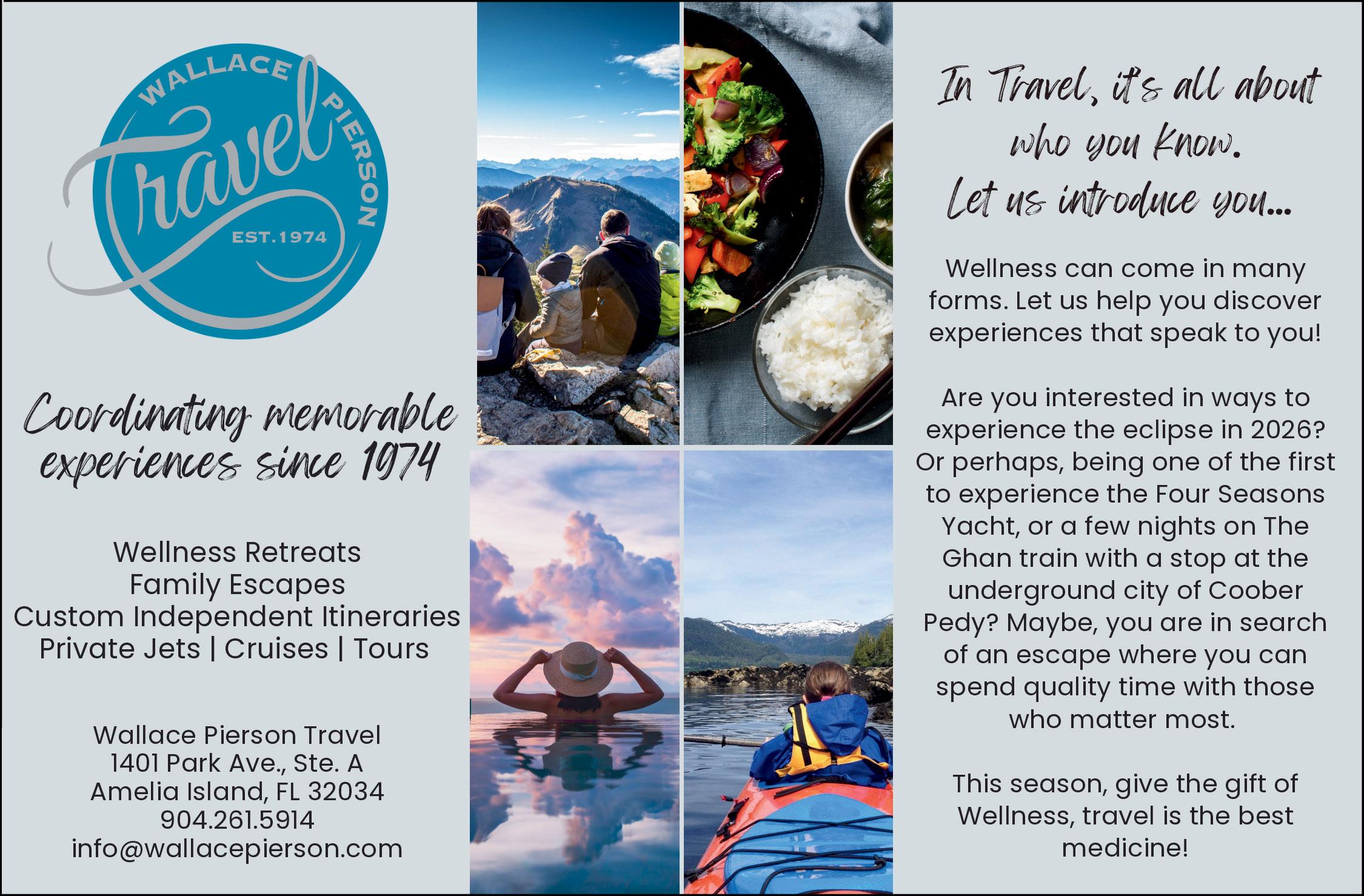

What’s one skincare mistake you wish everyone would stop making?
I really wish people would stop following TikTok’s advice! There have been so many absurd and even dangerous trends - I can’t tell you how many clients I see with a compromised skin barrier.
The other thing is using make-up wipes and thinking you just cleansed your skin. They actually leave behind a film, don’t really cleanse thoroughly and contain some harsh chemicals.

I always recommend double cleansing. First with an oil cleanser, massaging it in for at least 30 seconds and then rinsing. That way you melt away make up, sunscreen, sebum (natural waxy oil) and impurities. This is beneficial for all skin types, even acneic skin. Oil attracts oil and it dissolves sebum without over stripping the skin barrier. Over time it helps regulate oil production, reducing breakouts. The second cleanse should be a skin type specific cleanse.
BY FRANZISKA BERNHARD
Owner of FB Skin and Wellness, Franziska Bernhard’s decades-long practice has been about connecting the inner beauty to the outer self and creating harmony for the whole person.
A Licensed Esthetician, Certified Oncology Esthetician, Reiki Master, 500 HR YTT Yoga Instructor and Certified Hypnotist, Franziska’s multiple disciplines allow her to address a client’s life circumstances and goals to translate into physical and noticeable changes.
How does skincare change with the seasons, and what should people adjust first?

As the seasons change, so does your skin. During the summer months skin typically increases oil production. Combined with heat, humidity and extra UV exposure, there is a higher risk of acne flare ups, heat rash and sunburn. Use a gentle but thorough cleanser to help remove sweat, oil and sunscreen. Even with oily skin, it’s important to use a lightweight moisturizer. Keep skin protected with a good SPF. I really like mineral sunscreen, as it reflects the harmful UV Ray’s off the skin. Using ice globes is a great way to reduce any irritation or inflammation.
As it gets colder and we spend less time in direct sun, this is a perfect time to schedule a series of peels and corrective treatments. At home, gently exfoliate with an alpha-hydroxy acid and use a heavier moisturizer to increase hydration.
Once winter arrives with the harsh difference of indoor heat and cool, dry outside temperatures, stay ahead of dry, sensitive, compromised skin by avoiding hot showers and any cleansers that make you feel “squeaky clean.” Use a skin mist before you apply moisturizer. Add a weekly Hydrating sheet mask. Protect the delicate lip area with a moisturizing lip balm.
by
What’s one professional treatment you think everyone should try at least once — and why?
There are so many high-tech modalities available now, but nothing beats the power of the hands. I really wish everyone had the opportunity to try a facial or massage that is designed with the intention to regulate your nervous system. A practitioner that is skilled in helping you shift from a state of stress to a feeling of calm and peace will do more for that coveted glow than any machine ever can.
What’s your go-to advice for someone who feels overwhelmed by all the skincare products out there?
Find a licensed esthetician that offers consultations. Often, they are free, and investing in some good professional grade products instead of impulse buying at Sephora or Target will save you money. How many bottles did you stuff in a drawer because they were overwhelming or didn’t deliver as promised?
Another benefit of asking a licensed esthetician is that everybody's skin is different and there is no “one size fits all” when it comes to skin health. I like to start a novice on three to four products, a cleanser, a serum, moisturizer and SPF. Your routine doesn’t need to be complicated or cost a fortune to be effective.
How important is diet, sleep and stress management in achieving healthy skin?
Using the right products can only go so far. Skincare cannot outperform lifestyle. If you really want to level up your glow, you have to adopt a healthy lifestyle.
Getting enough sleep is crucial. Your skin repairs and heals overnight, as do all the systems of the body. Some of the processes that play a crucial role while you are asleep are: collagen production, reducing inflammation, increasing blood flow, delivering oxygen and nutrients and cell renewal.
Getting enough hydration will help your skin to retain moisture, improve elasticity, promote cell turnover, reduce inflammation and protect the skin from damage. I love to “eat my water” (think a juicy slice of watermelon). Fresh fruit and raw veggies will hydrate your cells from the inside out. The body can absorb water more slowly and sustainably from foods, compared to drinking large amounts of water.
Eating a balanced diet will promote healthy skin by providing vitamins, antioxidants, healthy fats and proteins. Having a healthy gut micro biome impacts the health of your skin. Some clients with stubborn acne have food sensitivities or allergies. We do some detective work and by eliminating some common irritants, it often clears up the worst of the inflammation and with the proper homecare it is possible to manage acneic skin.
Practicing some stress reducing relaxation techniques helps not only how you feel, but also how you look. Cortisol, a hormone released by stress can have significant effects on the skin. It stimulates sebaceous glands, leading to increased oil production. It also increased inflammation, possibly worsening conditions like excess, psoriasis, rosacea, acne. It starts breaking down collagen and elastin, leading to thinning skin, wrinkles and sagging. Getting enough sleep, going for a walk in nature, playing with a pet or a child, practicing yoga and meditation, receiving a facial or massage, putting down the phone and turning off the TV are all ways to help you manage stress.
What are some common signs that someone’s skin barrier is damaged?
I see so many clients struggle with a compromised barrier. Often the ingredients they use to manage their skin are exactly what is causing the issue. If your skin is tight, dry, flaky, red, rough and uneven, and a bit shiny, chances are your skin barrier is compromised. Overusing exfoliants, harsh acne creams and starting on a retinol cream too quickly can all cause compromised skin.
What are 3 must-have skin care products that you recommend?
• A cleanser, maybe one that contains an AHA (mandelic, lactic, citric or glycolic acid). My favorite for most clients is mandelic, it is the gentlest of the AHA’s and is well tolerated by all types, including acne prone, sensitive and darker skin tones.

• A good quality vitamin C serum to boost firmness and neutralize free radicals, while hydrating and soothing. Look for a magnesium ascorbyl phosphate form of vitamin C as it is not irritating and is effective at significantly lower concentrations.
• A skin specific moisturizer to support the skin's defense mechanism during the day and stimulate repair processes at night.
• And SPF, but that goes without saying.
If someone wants glowing skin fast, what’s your go-to fix or treatment?
There are several “no-peel” peels available that give all the benefits of traditional peels, with none of the downtime. Paired with a powerful hydrating mask, some red LED and cryo globes, that is a sure way to leave glowing.
BY DAPHNE FOREHAND
AMELIA ISLAND KEEPS GROWING WHEN IT COMES TO GREAT FOOD, AND I’VE BEEN DOING THE HARD WORK OF TRYING THEM ALL. HERE’S WHAT’S NEW, WHAT’S GOOD, AND WHAT YOU SHOULD BE EATING NEXT.



Mini Drunken Noodle started in St. Marys and has now brought its bold, flavorful dishes to Fernandina Beach. I stopped by recently, and it’s safe to say this place is going to become a favorite. It’s a new Asian restaurant on the island, and everything I tried was fresh, flavorful and full of personality.
The appetizer combo plate is a great way to start, with chicken satay, crispy spring rolls and a few other small bites that set the tone for what’s to come. My favorite dish was the spicy crispy pork belly rice bowl, which had just the right mix of heat, crunch and flavor. I also couldn’t resist ordering the Drunken Noodles, which were loaded with tender chicken, fresh vegetables and noodles coated in a savory, slightly spicy sauce that keeps you going back for another bite.
Mini Drunken Noodle is located at 510 South 8th Street in Fernandina Beach, and it’s already earning its spot as one of the island’s best new additions.
Fernandina Beach finally has its first Indian restaurant, and it’s bringing a whole new level of flavor to the local food scene. Curry Island Indian Kitchen is located at 1120 South 14th Street, and the moment you walk in, the warm colors, rich spices and friendly faces make you feel welcome right away.
The garlic and cheese naan came straight from the clay oven, soft, buttery and perfect for dipping into their flavorful sauces. My favorite dish was the Chicken Vindaloo, a classic curry that has deep, spicy flavor and tender pieces of chicken in a rich sauce that keeps you reaching for another bite. The Tandoori Sampler is also worth ordering if you want to try a little of everything. It comes out sizzling on a hot platter with lamb, chicken and shrimp, all cooked perfectly and full of smoky flavor.
Everything here feels homemade, from the spices to the sauces, and you can tell it’s cooked with care. Fernandina has been missing something like this, and I’m so happy it’s finally here.
If you’ve ever wanted to feel like you’re sitting in a little café in Paris without leaving Amelia Island, Marché Côtier is the place to go. Located at 5 South 2nd Street in downtown Fernandina Beach, this new European-style café, market, and wine bar has quickly become one of the prettiest and most relaxing spots in town.
The moment you walk in, you’ll notice how inviting it feels. You can order a glass of wine, share a little caviar with friends or pick up something special from the market to take home. Everything feels elevated but approachable, and the staff makes the experience feel personal and unhurried. On weekends, they serve a limited number of beautiful brunch boards that are as delicious as they are beautiful, but even during the week it’s the perfect place to sip and savor.
The whole space gives you that soft, European charm that makes time slow down a little. It’s elegant, cozy and one of those places where you can truly feel like you’ve escaped to Europe without ever having to leave the island.
Spicy noodles, crispy pork belly and big, bold flavor from start to finish.
favorite for flavor lovers.
A glass of wine, a little caviar and all the Parisian charm you could want right here at home.


Daphne Forehand is the founder of FloriSocial Marketing and the foodloving voice behind the Amelia Island-based Instagram food blog: @floridabites. What started as sharing her favorite meals on Instagram has grown into a career helping small businesses and restaurants shine online. When she’s not behind the camera or on her laptop, you’ll find her exploring North Florida’s food scene one bite at a time.


OCTOBER 7 THROUGH NOVEMBER 29
Island Art Association Nouveau Art Show “Song Lyrics”
11 a.m. - 5 p.m.
Island Art Association | islandart.org
Stop by and see this beautiful themed art show anytime during gallery hours through November!
This show is on display daily, except on Tuesdays, and on the weekends during gallery hours.
Island Art Association Open Studio
1 - 5 p.m. | Island Art Association islandart.org
Bring your own art project and supplies to the Art Education Center to craft in a group. Visit the Island Art Association’s website to learn more about weekly arts and family events! This event repeats on Tuesdays and Thursdays.
Fernandina Beach Market Place
9 a.m. - 1 p.m. | Fernandina Beach fernandinabeachmarketplace.com
Support your local community at the Fernandina Beach Market Place and choose from an array of locally grown and produced goods, like vegetables, sweet treats and honey.
This event repeats every Saturday, r ain or shine.
DECEMBER 2 THROUGH JANUARY 31
Island Art Association Nouveau Art Show “Sparkle”
1 - 5 p.m. | Island Art Association islandart.org
Stop by the Island Art Association Gallery on your weekends or when the kids get out of school to watch the themed art show “Sparkle.”
This show is on display daily, except on Tuesdays, and on the weekends during gallery hours.
DECEMBER 5 THROUGH DECEMBER 14 “Scrooge” the Musical Amelia Musical Playhouse ameliamusicalplayhouse.com
Embrace the holiday spirit by visiting the Amelia Musical Playhouse for its live “Scrooge” musical, based on Charles Dickens’ “A Christmas Carol.” This event is on Friday through Sunday.
DECEMBER 6 THROUGH DECEMBER 20
Santa’s Storybook Tea
12 - 1:30 p.m. | Salt Restaurant at The Ritz-Carlton ritzcarlton.com
Create a beautiful Christmas keepsake by taking a photo with Santa Claus. Guests can also enjoy a storybook reading by Santa and afternoon tea in a holiday-themed room featuring gingerbread decor and a buffet with pastries, cakes and more.
This event repeats every Saturday from December 6 to 20.
Ukelele Fun Group
7 - 8 p.m. | Island Art Association islandart.org
Bring your instrument and voice and join in on the fun at the Island Art Association for its free Ukulele Fun Group activity.
This event is held on the first and third Tuesdays of the month.
Second Saturday
Artrageous Artwalk
5 - 7 p.m. | Island Art Association islandart.org
Stroll through the Island Art Association Gallery and meet featured artists while enjoying appetizers, wine and sodas.
This event repeats on the second Saturday of each month.
DECEMBER 11 THROUGH DECEMBER 14
Dickens on Centre Christmas Market and Holiday Festival
Downtown Fernandina Beach www.ameliaisland.com
Celebrate Christmas and the history of Fernandina Beach at the annual Dickens on Centre Christmas Market and Holiday Festival. The free event features a Victorian Christmas Market, Victorian-inspired entertainment, shopping, food and drink, costumes and holiday music.
This event is daily from Thursday, December 11, to December 14.
Saturday, November 1Sunday, November 2
Right Whale Festival
10 a.m. - 6 p.m. Saturday, 10 a.m. - 3 p.m. Sunday Main Beach Park rightwhalefestival.com
Celebrate the annual return of endangered North Atlantic right whales to coastal waters off northeast Florida and Georgia. The celebration raises awareness of endangered species and their recovery and features oceanthemed activities and exhibits.
Saturday, November 1Sunday, November 2
A Night at the Opera - Viennese Masked Ball
6:30 - 7:30 p.m. Saturday, 4 - 5 p.m. Sunday | Amelia Community Theatre ameliaislandopera.org
A Night at the Opera invites guests to dress up in their best gown and spend a night of sophistication, spectacle and mystery. The formal event is themed as a Viennese Masked Ball and offers musical performance, hors d’oeuvres, dessert and Viennese opera classics.
Monday, November 3
Exploring Watercolors Workshop
12:30 - 3:30 p.m.
Island Art Association | islandart.org
Enjoy a relaxing watercolor class open to all experience levels at the Art Education Center at the Island Art Association. The workshop offers a $150 three-day session class and a $200 fourday class.
Saturday, November 8
38th Annual Taste of Amelia 1:30 - 4:30 p.m.
The Palace Saloon Shipyard ameliaisland.com
Participate in this restaurant crawl event and enjoy local food, music, drinks and a silent auction.
Saturday, November 8
2nd Annual Community Care Day Festival
10 a.m. - 2 p.m. | Central Park ameliaisland.com
In support of survivors of domestic violence, this family-friendly festival celebrates local resources and businesses from across the globe. It features food trucks, music, local vendors and a kids zone.

Saturday, November 15
AddyFest
11 a.m. - 3 p.m. | Central Park addyfest.godaddysites.com
Gather around a campfire with s’mores, music, bounce houses and local vendors to “light a fire” under childhood cancer awareness. All proceeds go toward AddyFest and local families struggling with childhood cancer.
Saturday, November 15
Baptist Medical Center Nassau
Pickleball Tournament
9 a.m. - 5 p.m.
Nassau Pickleball 365 Facility
Who doesn’t love a good pickleball game? Come join in the fun with other pickleball enthusiast. Proceeds from the tournament will benefit the Women’s & Men’s Health and Services endowment at Baptist Medical Center.
Saturday, November 15
C.A.S.T for Kids
8:30 a.m. | Goffinsville Nassau River Park and Boat Ramp castforkids.org
Intended for children with special needs, this event offers free fishing for two to three hours, lunch, an awards ceremony and fishing equipment for children to bring home.
Saturday, November 15
Neighborhood Clean Up Day
10 a.m. - 12 p.m. | Franklintown Community Church | ameliaisland.com
Make a difference in your community by gathering at Franklintown Community Church to help clean up the historic cemetery.
Saturday, November 15Sunday, November 16
Encaustic Painting Workshop
10 a.m. - 4 p.m. | Island Art Association islandart.org
Experience an ancient painting process with hot-pigmented beeswax and learn about the history and safety of the art in this 2-day workshop at the Island Art Association.
Sunday, November 16
Amelia Island Jewish Festival
Waiting for confirmation of time/date Central Park | Facebook.com
Celebrate Jewish culture and life with food, music and community.
Saturday, November 22 and December 20
Children’s Art Classes
11 a.m. - 12: 30 p.m.
Island Art Association | islandart.org
Bring your child to the Art Education Center at the Island Art Association to take part in an art class. Registration is not required, but classes fill quickly. Visit the association’s website to learn more about free and inexpensive events for children and families, such as photography group meetings and challenges.
Wednesday, November 26
Christmas Tree Lighting and Arrival of Santa Claus by The Ritz-Carlton
The Ritz Carlton, Amelia Island ritzcarltonameliaisland
Wave hello to Santa Claus as he arrives on a train and watch the lighting of the 40-foot Ritz-Carlton Christmas tree. The event also serves as a fundraiser for local charities and features live music, fireworks and refreshments and cookies.

November 27
Thursday, November 27
Omni Turkey Trok 5K
8 a.m. | Omni Amelia Island Resort & Spa omniturkeytrot5k.com
Gather at Omni Amelia Island Resort & Spa to participate in a time-chipped 5K race. Running or walking is acceptable. A portion of the proceeds will go toward the First Coast YMCA.
Friday, November 28
Annual Black Friday Pajama Party
8 a.m. - 4 p.m. | Downtown Fernandina Beach | ameliaisland.com
Celebrate Black Friday in your pajamas and take a look at special deals, discounts and refreshments. Don’t be afraid to participate in its pajama contest, with prizes donated by local merchants.

Friday, November 28
Annual Christmas Tree Lighting
4 - 6 p.m. | Downtown Fernandina Beach ameliaisland.com
Celebrate the start of the holidays at Downtown Fernandina Beach’s Annual Christmas Tree Lighting at the foot of Centre Street, featuring food, merchandise, vendors, live entertainment, Santa Claus and, of course, a Christmas tree.
Friday, November 28
Thanksgiving Grand Feast
11:30 a.m. - 3:30 p.m.
The Ritz-Carlton, Amelia Island ritzcarlton.com
Celebrate Thanksgiving lunch with a selection of traditional holiday favorites and live music at The Ritz-Carlton. The event also offers holiday-themed crafts and games for children.
Friday, December 5Saturday, December 6
Amelia Island Holiday Home Tour
10 a.m. - 4 p.m. ameliamuseum.org
Take an inside look at five homes in the historic downtown district that feature beautiful holiday season decorations and a captivating history.
Saturday, December 6
Lighted Christmas Parade and Santa Event
6 p.m. | Downtown Fernandina Beach fernandinamainstreet.com
Enjoy a parade with bands, dancers and lighted floats in downtown Fernandina Beach and an after-party with vendors, music and Santa. The after-party is scheduled from 7 p.m. to 9 p.m.
Thursday, December 11 –
Sunday, December 14
Dickens on Centre: A Victoria Christmas Festival ameliaisland.com
Come join in the annual Dickens on Centre Christmas Market and Holiday Festival in historic downtown Fernandina Beach. Free to the public, there will be Victorian inspired entertainment, a kids zone, visits from Saint Nick, holiday entertainment, shopping, food and more!
Friday, December 12
Latin Divos Christmas
7 - 9 p.m. | Amelia Plantation Chapel ameliaisland.com
Enjoy a night of Christmas tunes and popular hits from The Latin Divos, a vocal trio that produces rich harmonies with Latin flair.

Evening of Sunday, December 14 FIRST DAY OF HANUKKAH


Wednesday, December
New
Celebrate

Wednesday, December 31







